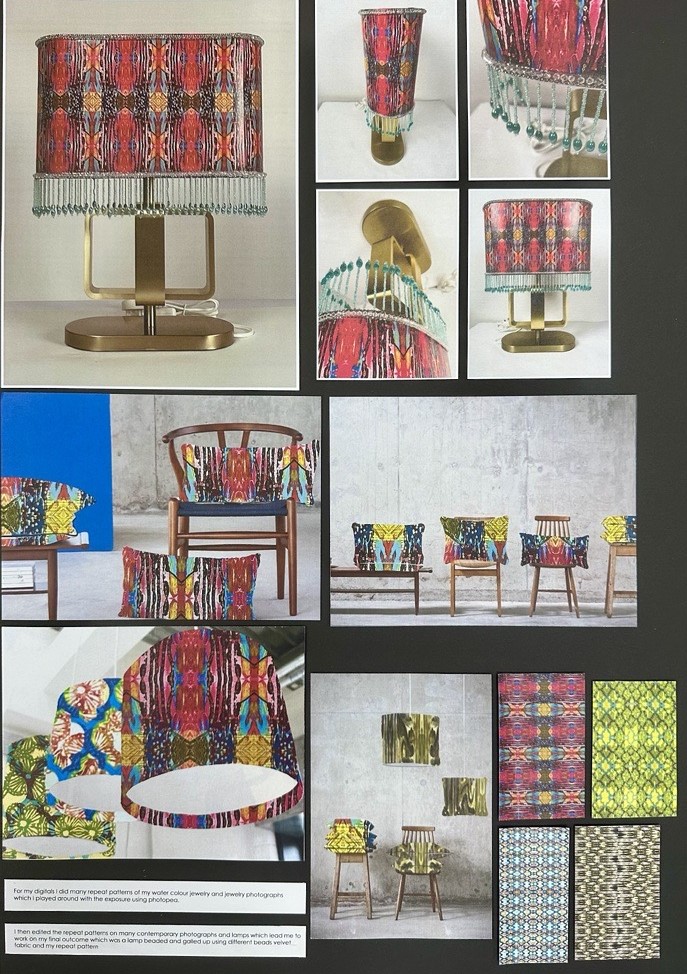



The IGCSE Fine Art course at Deira International School is an exceptional choice for students passionate about painting and drawing. This course is thoughtfully designed to nurture creativity and skill, with Year 10 focusing on experimenting with and refining techniques across a variety of mediums. Our dedicated and experienced teachers provide high-quality instruction to prepare students for their coursework, ensuring they build confidence and proficiency as they develop their artistic voice.
Students will undertake two coursework components, each contributing 50% to their final grade. Through these projects, they will explore and showcase their talents using an array of materials, including graphite, pen, ink, watercolours, oil pastels, acrylics, oil paints, and printing techniques. The result is a remarkable portfolio of work, celebrated within the school and beyond in external exhibitions. IGCSE students also enjoy unique opportunities, such as participating in a personalised workshop with British artist Ian Murphy and visiting local galleries and exhibitions. This enriching course ensures students leave with not only an impressive body of work but also unforgettable experiences that inspire lifelong creativity.
WHAT YOU WILL STUDY
Drawing
- The use of expressive and descriptive mark-making to record and communicate ideas.
- The use of a range of drawing materials, media and techniques such as graphite, pastel, charcoal, ink, chalk, digital drawing applications and a range of drawing surfaces.
Lens-/light-based media
- The use of digital, film and/or video elements such as lighting, time, sound, editing, space and composition to communicate ideas.
- The use of a range of lens- and light-based media, materials and techniques such as montage, mixed media, installation, animation, studio and location photography, pre-and post-production manipulation.
Mixed media
- The combining and manipulating of two-dimensional and three-dimensional media to communicate ideas.
- The combination of a range of mixed media materials and techniques such as wet and dry media, collage, objects, textiles, two- and three-dimensional elements, digital and non-digital application.
Print Making
- The creation of surfaces from which an image can be transferred to communicate ideas.
- The use of a variety of materials, media and techniques such as linoleum, screen, intaglio, relief, lithography, drypoint, etching and monoprint, using a range of inks and printing surfaces.
- Painting
- The use of expressive and descriptive mark-making to record and communicate ideas.
- The use of a range of painting materials, tools and techniques such as gouache, water colour, acrylic, oil, dyes, brushes, digital painting applications and a range of painting surfaces.
HOW WILL YOU BE ASSESSED
Students will be assessed externally via the examination board the expectations from the student will be as follows;
- Three sheets of supporting studies (maximum size A2 for each sheet)
- One sheet of final outcome/s (maximum size A2).
Assessment Objectives | International GCSE Weighting | |
AO1 | Develop ideas through investigations, demonstrating critical understanding of sources | 25% |
AO2 | Refine work by exploring ideas, selecting and experimenting with appropriate media, materials, techniques and processes | 25% |
AO3 | Record ideas, observations and insights relevant to intentions as work progresses | 25% |
AO4 | Present a personal and meaningful response that realises intentions and demonstrates understanding of visual language | 25% |
WHAT THIS SUBJECT CAN LEAD TO
- Architecture, Design Engineering, Motor vehicles Design, Animation, Graphic Artist, Advertisement Fashion Designing, Interior Designing, Photography, Fabric designer, Product Design are just some of the career paths which can be taken through studying Art.